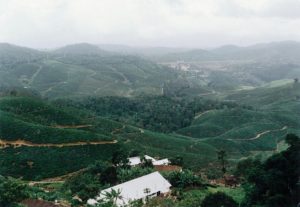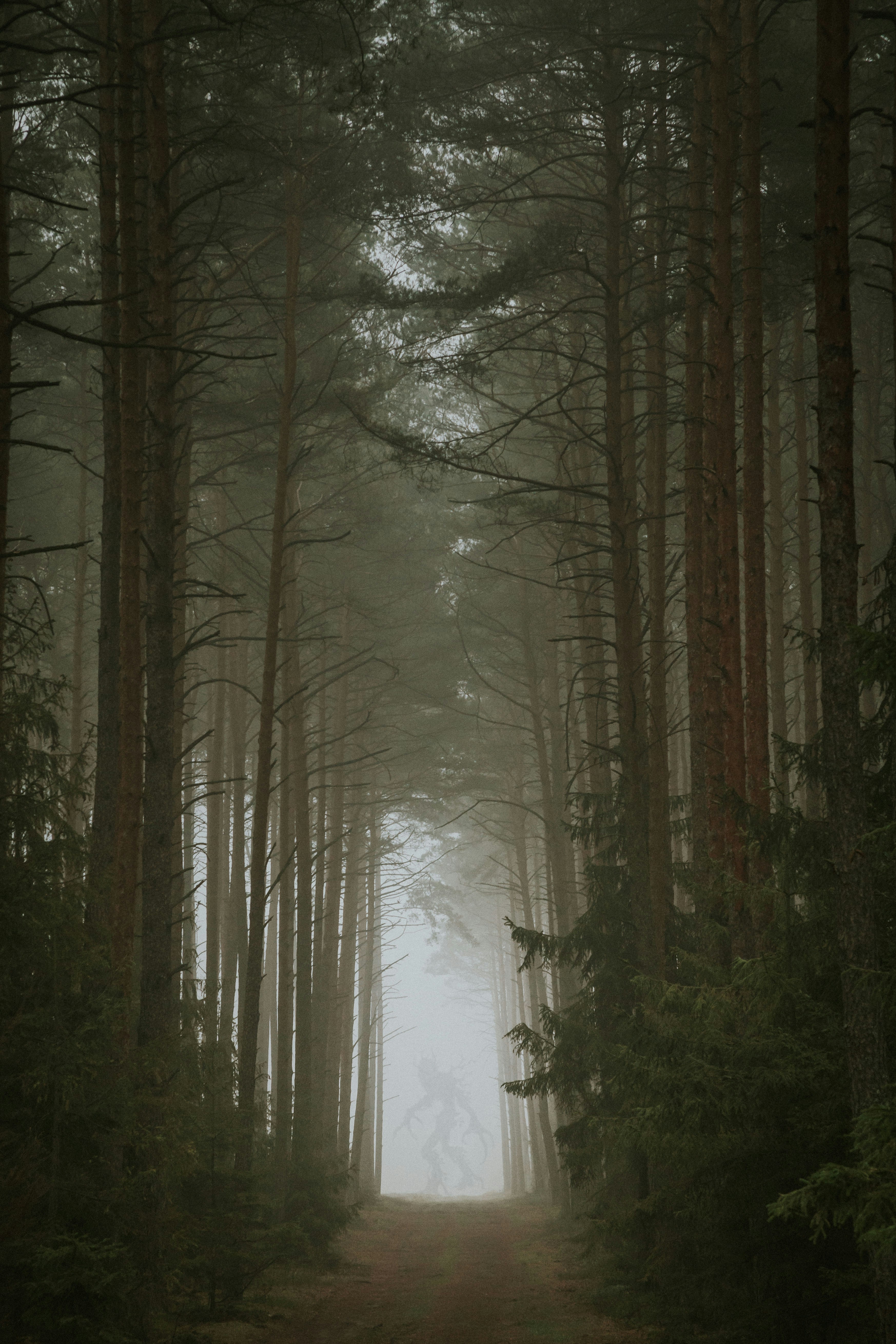
In Lower Sheikalmudi Estate, on the other side of Sholayar Dam in the Anamallais, we had a coffee area which was adjacent to the reserve forest. The coffee presented open grazing area to the Sambar and Gaur that live in the reserve forest. They did not damage the coffee itself but would feed on the grass and shrubs that grew in the fields. I set up two or three salt licks in this area to attract these animals and to get them used to coming into our area so that we could watch and photograph them. For this I got some bricks of rock salt from the Forest Department and cleared small patches in the grass to arrange them. Once the animals discovered them we had a huge herd of Gaur, about thirty-five of them, who took up residence in the coffee area. They would come down from the hills every evening as the sun went down and would leave only the next morning once our workers started to arrive in the fields. They would be joined by several Sambar hinds and stags so that when I would drive into the coffee area at night, I would see this big herd lying down and chewing the cud. It was almost like seeing domestic cattle at rest; the Gaur had become so used to us. Grazing animals love salt, which they get from deposits in the soil. Carnivores get it from the blood of their prey. So if you put out some salt in the forest you were absolutely sure to get anything which was in the vicinity to come visit.
If you walked to the end of the coffee area and entered the forest, taking the small pathway leading up the hill, you would pass under the heavy shade of big leaved, tall trees. Lining the path were lovely light green big leaved shrubs, which if you didn’t know what they were and took one in your hand, it would prove to be a very painful and potentially dangerous experience. These were stinging nettles called locally Anaimarti (the chaser away of elephants). The leaves have poisonous hair on them, which produce anything from painful rashes, to blisters, to high fever, and delirium, depending on your level of tolerance. As you walk along this path it is a good idea to keep all your senses functioning. The thick undergrowth can and does hide anything. As you continue climbing steadily, getting sweatier by the minute due to a lack of breeze, you come to a small flat rock on your right a little way inside the forest. If you walk silently you will almost always see the resident cobra that likes to sun himself on that rock. Sometimes you will see his skin, which he has shed and then you must be very careful because he is almost blind for a while and extremely irritable.
As you continue onwards, you will come out of the forest into an open area which is a sheet of rock. This area stretches about three kilometers all the way up to the ridge beyond which the forest descends three-thousand feet down to the backwaters of Parambikulam Lake. This sheet of rock is covered with a patchy lichen growth almost all over which becomes yellow when it matures and so it is called Manjaparai (Yellow Rock). This is also where you will get the first breath of cool breeze, most welcome on your hot and damp brow. There is a large clump of thorny bush right before you and almost surely you will hear the ‘Dhank’ of a Sambar doe as she bolts out of the bush and gallops down the thirty-degree rocky slope at a speed that would certainly topple a horse and break its neck.
If you continue to climb then you would eventually come to the top of Manjaparai , which was a small flat plateau through which flowed a small perennial stream. I’d had a machan (platform) built on a tree at the edge of the forest overlooking the stream, which emptied into a small pool and then went down the slope of Manjaparai . I had cleared a small pathway to get to it, but without disturbing the area or its animals. The machan was halfway up the tree at a height of about twenty feet. It was quite substantial and could comfortably seat four people. We would sit there late into the night watching animals come to drink at the pool. It was an amazing experience to suddenly see a shadow move and realize that what you had been looking at was not a shadow at all but a Gaur bull; the herd leader who was watching to see if the coast was clear to signal his herd to follow him to the water. This forest had tigers and so the Gaur and Sambar, which are its main prey were very cautious.
We once had a full-grown Gaur cow killed by a tiger in our coffee area. At first the Forest Guards came and tried to accuse us of having shot the animal in an attempt to extract some silence money. But I would have none of that and demanded that the DFO come to inspect. When he came, I took him to the carcass and showed him the telltale claw marks of the tiger. The tiger attacks from behind and rides the animal, and as it gallops in panic, the tiger reaches forward and hooks its claws into the animal’s nose and draws its head back, biting into the back of the neck to get at the spinal cord until the animal falls and breaks its neck. If you see the neck of a Gaur, how huge and muscular it is, you can imagine the strength of the tiger which can force that neck to bend back until it makes the animal fall. Tigers generally go for juveniles or cows, which are smaller. The big bulls are immune to everything except men and old age. The DFO (District Forest Officer) was more knowledgeable than the Forest Guard and so the matter was resolved.
You sat in the machan very still, secure in the knowledge that you were invisible unless you moved. Though the game viewing was amazing, the stillness made you very stiff, a relatively small price to pay for the privilege of watching wild animals in their habitat. In the early hours of the morning, after all animal movement had ceased and it started getting bitterly cold, which it does in the forest at that elevation, we would come down onto the rock, light a nice big fire and warm ourselves and spend the rest of the night sleeping on the rock around the fire. Then in the morning we would re-kindle the fire and put on the tea pot and watch the sun come up over the horizon. I know many people lived in Lower Sheikalmudi, but I don’t know of anyone other than myself and Suresh Menon, who was my assistant at the time, who enjoyed the beauty of the forest like we did. It was a rare privilege and we appreciated every minute of it.


